Acoustic Indices #
Marina D. A. Scarpelli - PhD candidate at QUT
@ScarpelliNina
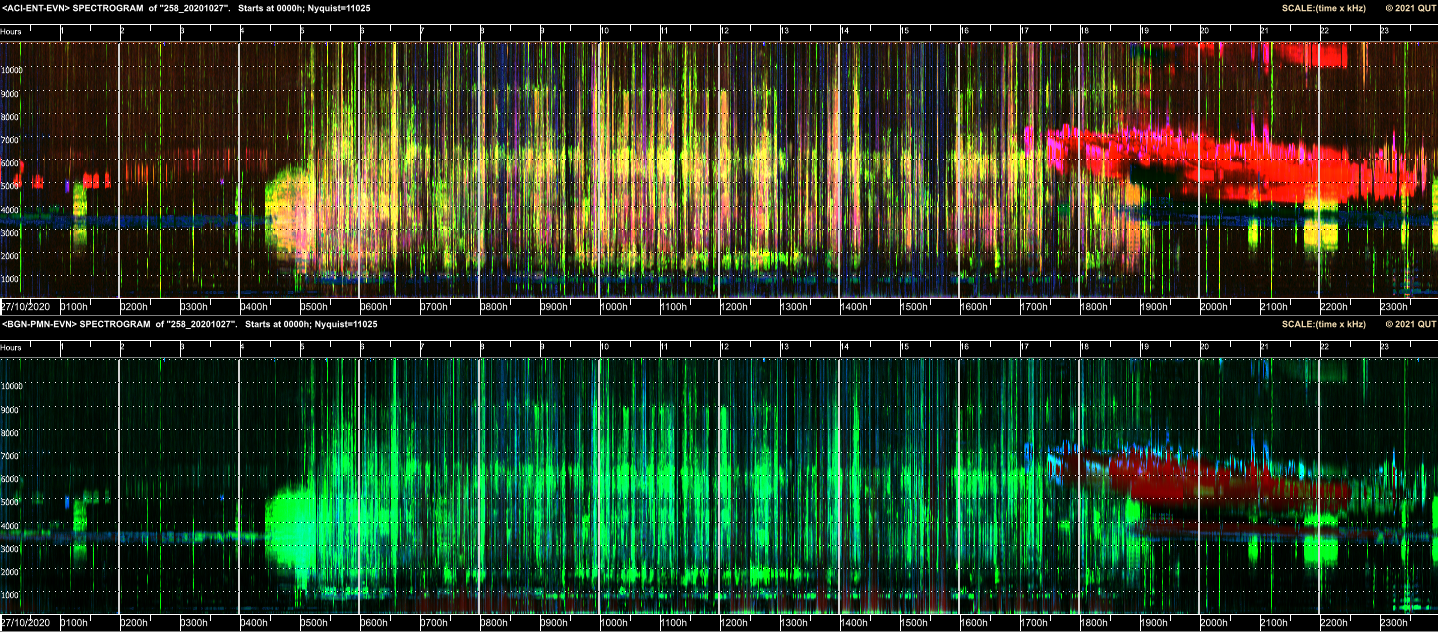
Two approaches: Bioacoustics vs Ecoacoustics #
- Species-specific approach: consider the communication system exclusively between
sender and receiver
- Usually called bioacoustics

- Communication structure is more similar to a network (Sueur, 2014)
- Ecoacoustics or soundscape approach
- Soundscape: all the sounds in the landscape
- Biophony + Geophony + Technophony
- Enables the detection not only of species calls, but also social, behavioural and ecological cues
- Ecoacoustics or soundscape approach

Passive Acoustic Monitoring (PAM) #
- Passive acoustic recorders facilitated the investigation
of more comprehensive questions, enabling research on:
- Soundscapes
- Multiple species
- Upscaling bioacoustics questions: temporal and spatially
- However analytical tools still needed to be improved
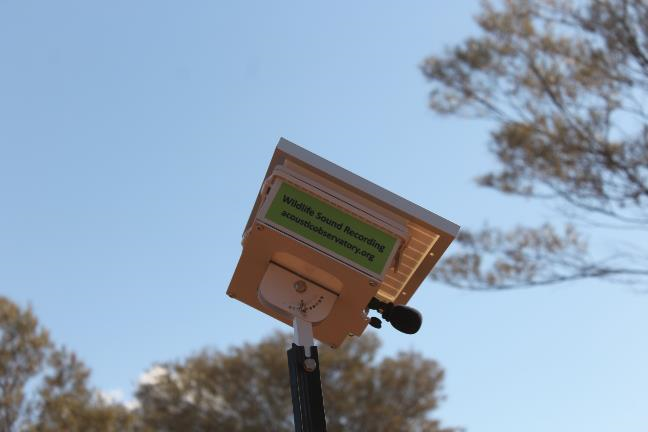
Approaches to analyse the data #
- Manually listening/annotating
- Species recognisers (automatic/semi-automatic)
- Acoustic indices (AI): summarising information
- More than 69 existing indices (Alcocer et al., 2022)
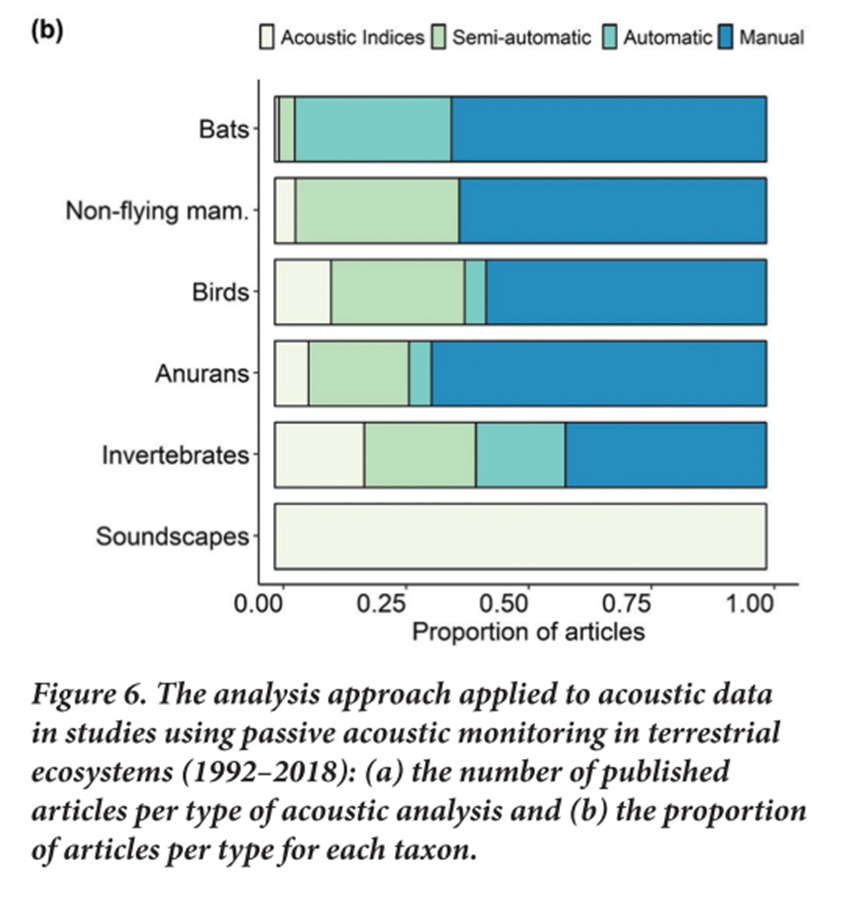
Sugai LSM, Silva TSF, Ribeiro JW, Llusia D. 2019. Terrestrial Passive Acoustic Monitoring:
Review and Perspectives. BioScience 69:5–11.
Acoustic indices #
- Linked to the “Soundscape” or Ecoacoustics approach (Alcocer et al., 2022)
- Mathematical function applied to waveform or spectrogram
- Can be derived from traditional ecological indices (i.e.: diversity, richness, etc)
- Summarise the acoustic information with a community perspective
- Moving away from species-specific questions
Types of Indices #
Sueur et al., 2014 #
- Intensity indices: measure sound intensity (in dB) with different frequency weighting and time averaging
- They usually miss information on frequency and temporal patterns of soundscapes
Types of Indices #
Sueur et al., 2014 #
- Complexity indices: more species and individuals communicating will increase the complexity of the soundscape
- Heterogeneity would be a proxy of animal acoustic activity
Types of Indices #
Sueur et al., 2014 #
- Soundscape derived indices: estimates the relative contribution of biophony in relation to technophony and geophony
- Splits the spectrum into frequency bands:
- 0.2 to 2 kHz = technophony
- 2 to 8kHz = biophony
- geophony: occupies the entire spectrum
Soundscape indices #
Splitting frequency bands #
Sometimes it works…
Technophony
Soundscape indices #
Splitting frequency bands #
Sometimes it works…
Biophony
Soundscape indices #
Splitting frequency bands #
Sometimes it works…
Geophony
Soundscape indices #
Splitting frequency bands #
Sometimes it does not work…
Geophony
Soundscape indices #
Splitting frequency bands #
Sometimes it does not work…
Biophony
Soundscape indices #
Splitting frequency bands #
Sometimes it does not work…
Biophony
Acoustic indices disadvantages #
- Sounds are multidimensional: frequency, time and amplitude
- Environmental recordings have an additional constraint:
- It is hard to determine the distance between sound source (e.g.: animal)
to microphone
- Amplitude metrics depend on distance because of attenuation effects
- It is hard to determine the distance between sound source (e.g.: animal)
to microphone
- Other factors might influence values:
- E.g. background noise, intensity and repetition of calls by one individual, overlaps between calls,etc
- Therefore the relationship between one index/one ecological metric is still unclear
Acoustic indices measuring biodiversity #
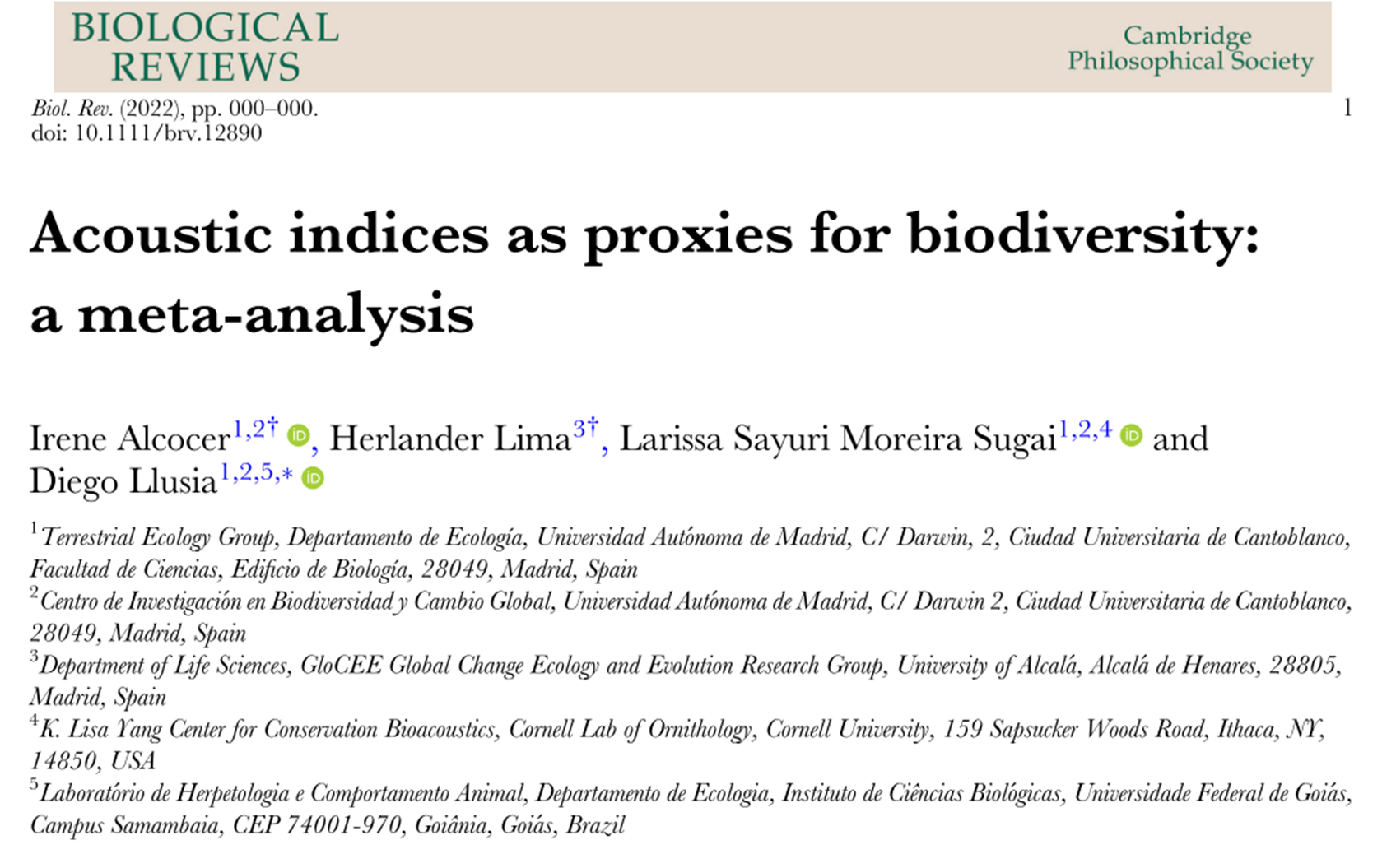
Summary of meta-analysis #
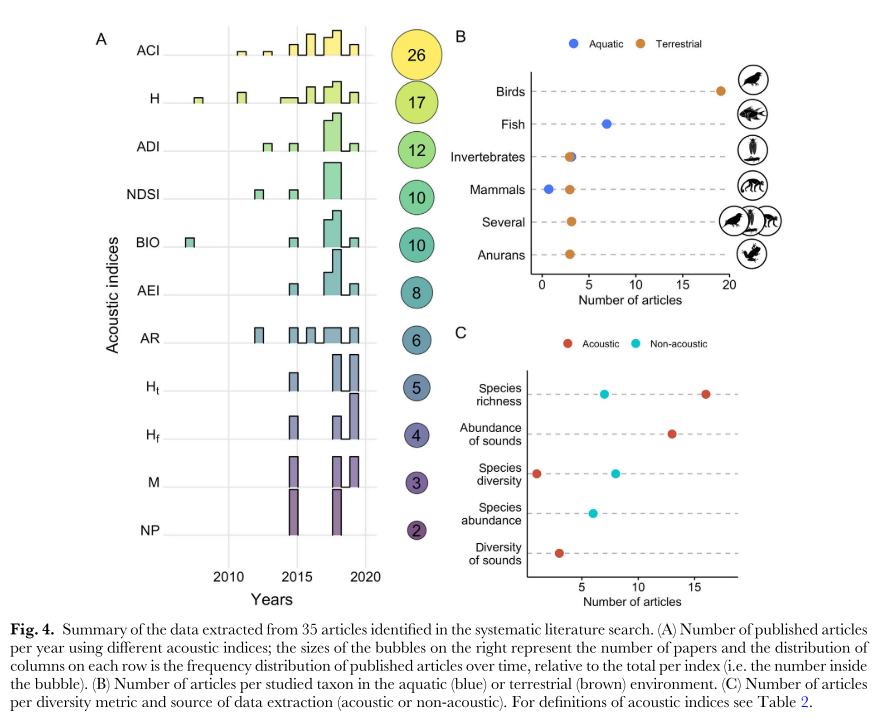
- AI had an overall moderate positive correlation with biodiversity
- Best biodiversity metric correlated with AI was abundance of sounds
- There was no single best AI
Summary of meta-analysis #

- Majority of studies investigated terrestrial habitats and birds are the main group studied;
- Species richness and abundance of sounds are the most explored metric to relate acoustic indices values to biodiversity measures
Now, let’s do some practical exercises!
Go to the practical.
Acoustic Indices Marina D. A. Scarpelli - PhD candidate at QUT @ScarpelliNina